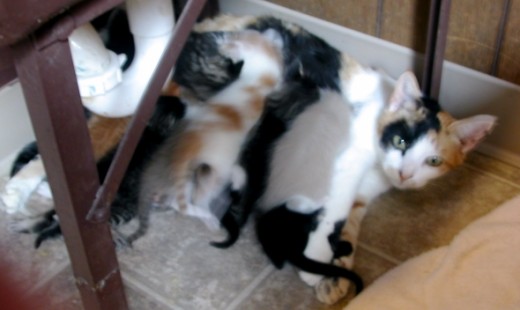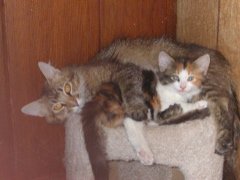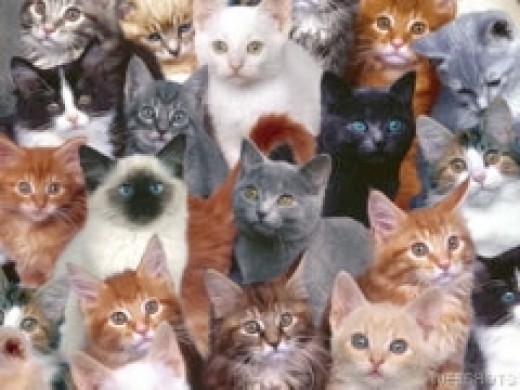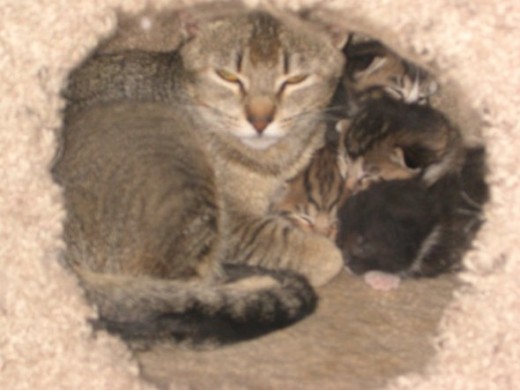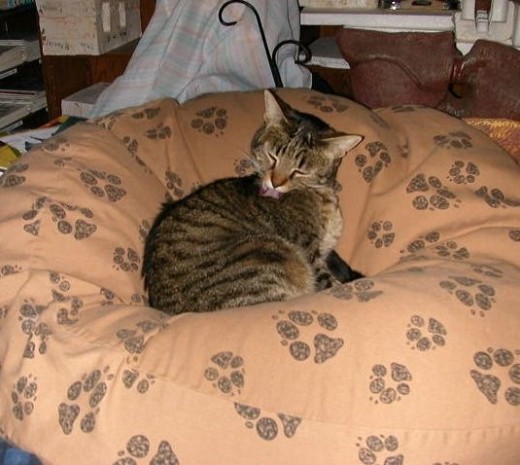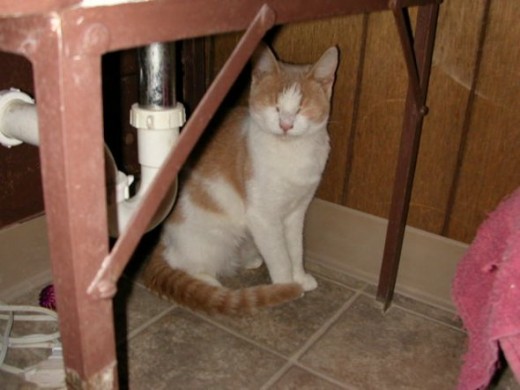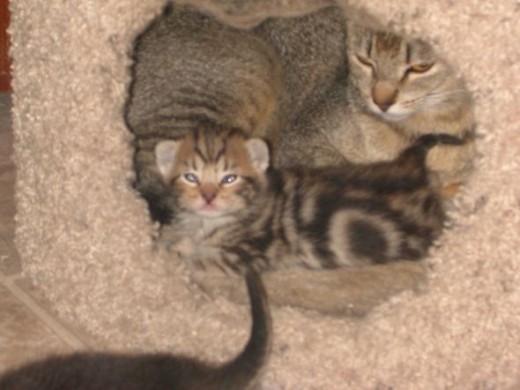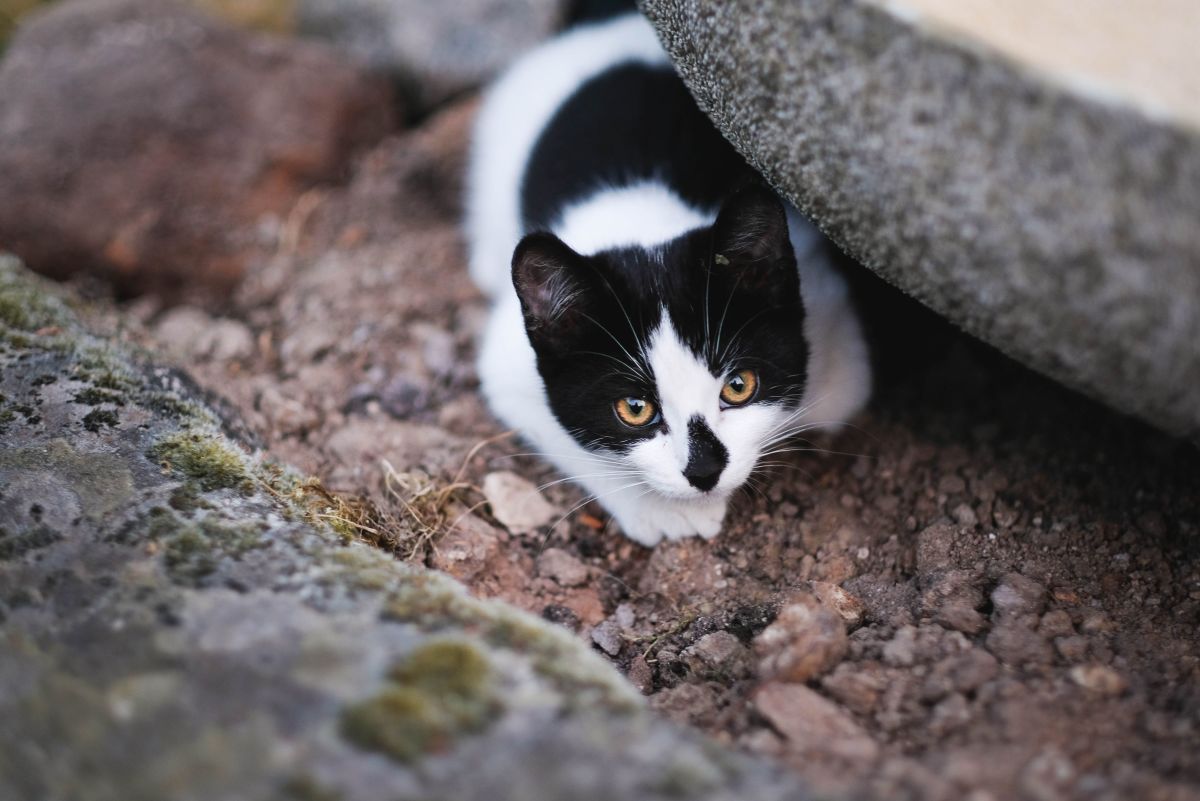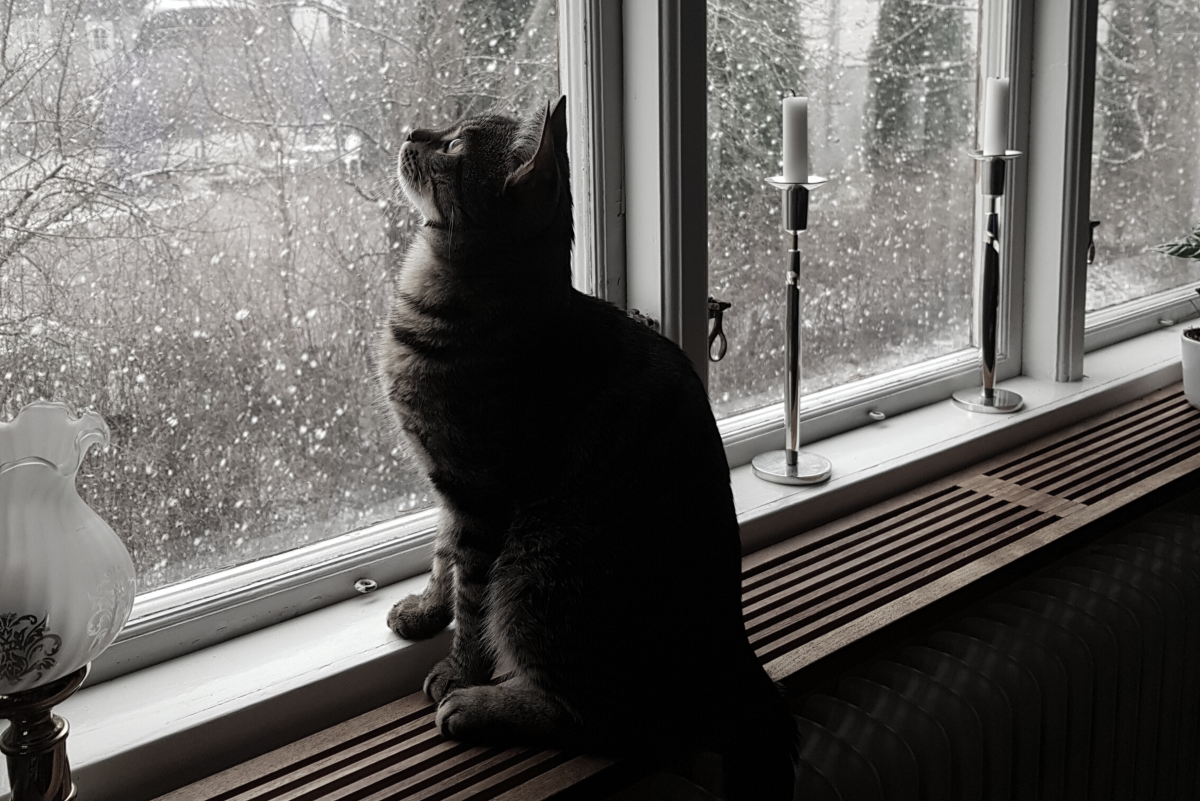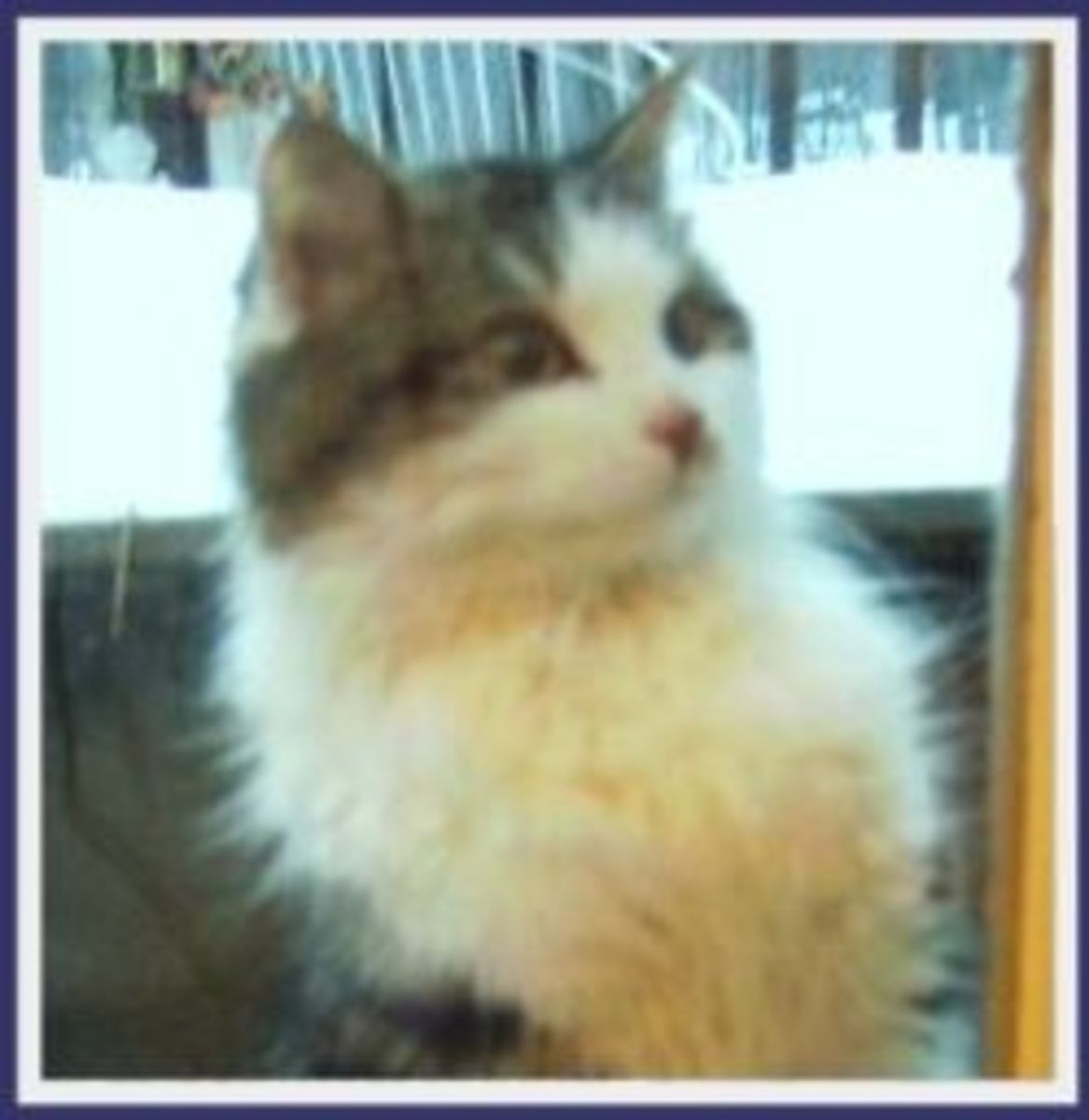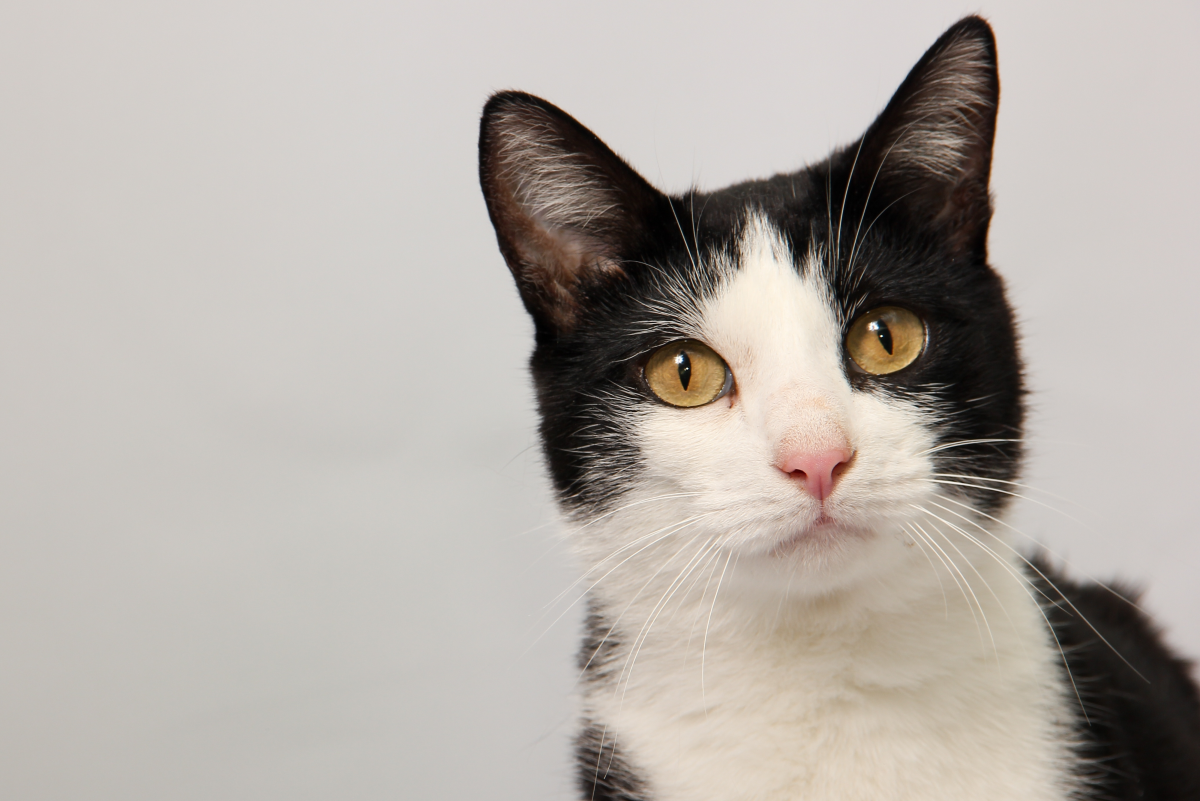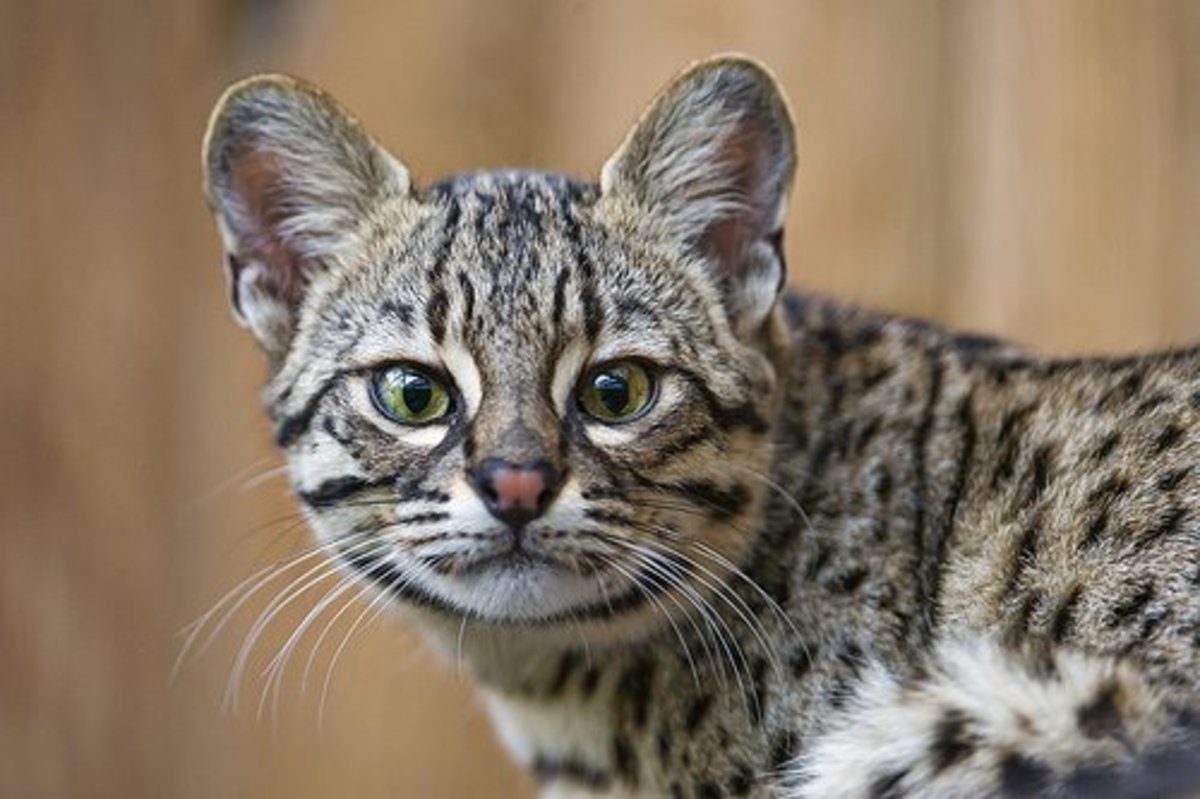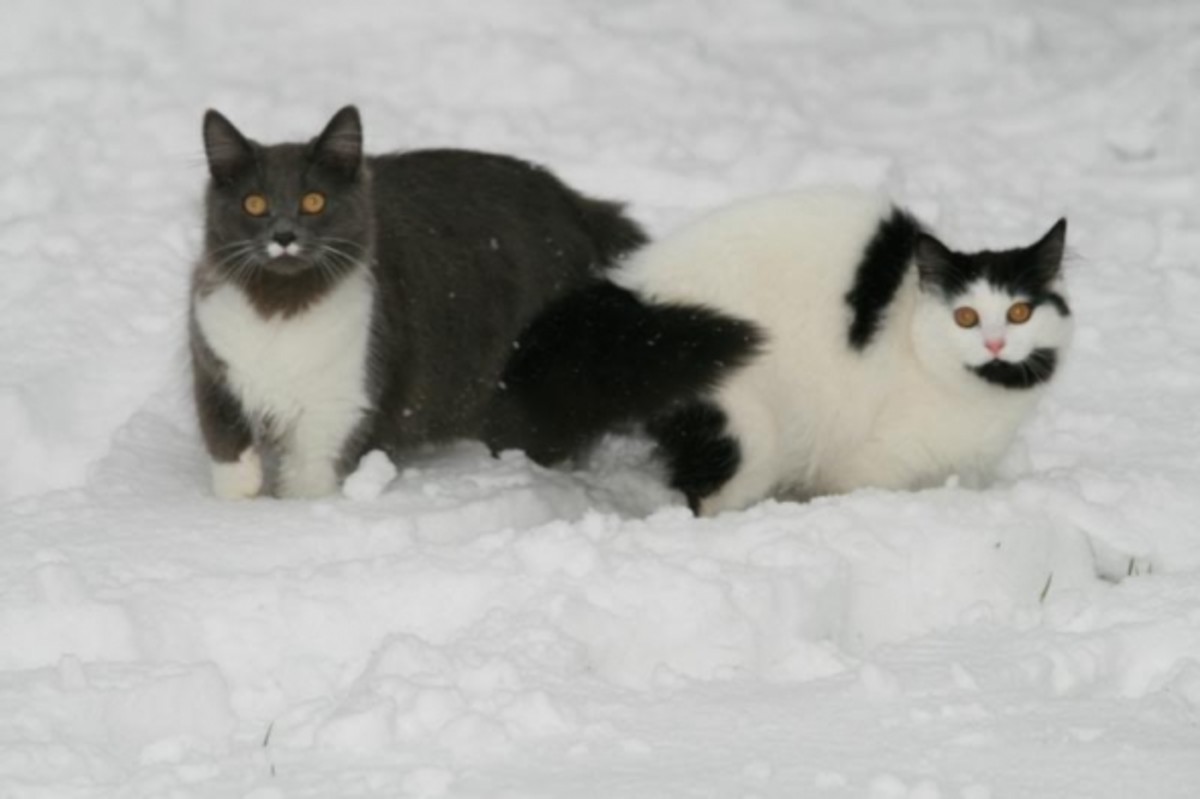How To Save Feral Cats and Stop Overpopulation With TNR

Here's how to stop killing Feral Cats and save birds at the same time.
Learn all about feral cats and the TNR (Trap, Neuter, Return) programs; what feral means; how they live; the arguments for and against TNR programs. You'll also find links to rescue organizations, materials on TNR and how you can start or join existing TNR programs. Millions of feral cats are killed in shelters every year in the United States. TNR (trap-neuter-return) is a program that is practiced throughout the world to save these cats, allowing them to live out their lives -- not killed because they're considered homeless.
This lens is dedicated to Tara -- the little cat shown here -- a feral cat that stole our hearts. I'll share with you Tara's story. Check out the wonderful pictures I have of her and other feral cats I've met and come back as I'll add more. I'll also include links to organizations and resource materials on both sides of the issue.
I am 100 percent for TNR, however, I'll give you the arguments from both sides of the issue so you can make up your own mind.
P.S. The term neutered is used for both males and females, although the term spay is usually used for females.
Are You For or Against TNR? - Poll
Please take this poll to let me know what you think of TNR BEFORE reading this lens. Please take the poll at the end, (before the guest book). It will tell me how effective this lens is and what additional information to add. Thank you!
How Familiar Are You With TNR?
Photos of Ferals - Most of these have been domesticated
Click thumbnail to view full-size







What Is TNR?
TNR Explained
TNR stands for Trap, Neuter and Return. It refers to using humane traps to trap feral cats, taking them to a shelter or mobile facilty and having them neutered (sterilized) and vaccinated. After they have been neutered, the cat is returned to their home (where they were trapped).
Trap-Neuter-Return (TNR) method, in which entire colonies of cats are trapped, vaccinated, and sterilized by a veterinarian works extremely well to curb the numbers of unwanted, feral cats.
The right ear of the feral cat is eartipped (cut off) so that you can know which has already been neutered so if they wind up in another trap they can be released immediately.
Homes are found for young kittens, who can be tamed. Healthy adults are returned outdoors, where volunteers feed and look after them for the remainder of their lives.
Simply put, TNR is the most humane and cost effective way to control the feral cat population.

The No Kill Movement
Stop killing all animals
A new revolution that is transforming the world is here: The No Kill Movement is replacing the outdated notion that if animals are in our way -- or are homeless -- we should kill them.
The old model is still being practiced by many so-called humane societies and shelters. Even many that claim to be no-kill facilities. Most, if they look like they are going to run out of room, they kill to get back down to whatever their arbitrary numbers are. Or, they have "shelf-life" rules. For instance if a cat or dog is not adopted in 30 days of capture then they are euthanized.
The good ones, those run by people who are out to save every single animal they can, go the extra mile to find homes for the animals.
6 Ways Shelters Can Reduce Killing Cats and Dogs
1. TNR education for the public
2. Run TNR programs along with volunteers
3. Spay/Neuter education -- Start with the kids
4. Spay/Neuter programs -- low-cost and free
5. Join with rescue groups to find homes
6. Educate people to keep cats indoors
Declaration of the No Kill Movement in the US.
An excerpt: "This year, some five million dogs and cats will be killed in shelters. The vast majority can and should be placed into loving homes or should never enter shelters in the first place. But there is hope.
No Kill sheltering models, based on innovative, non-lethal programs and services, have already saved the lives of tens of thousands of animals. But instead of embracing No Kill, many shelters-and their national agency allies-cling to their failed models of the past, models that result in the killing of millions of dogs and cats in U.S. shelters every year."
Click here to view the compelete and more on this movement No Kill Center.
The Saving Of A Feral Cat
Tara's Story
Tara The Terrified: PART 1
My Experience Socializing Feral Kittens
Tara in her cage sitting on Hawk
I have been doing foster care for the local humane society since 2000. In 2001, I was asked to try to socialize a litter of 3. They were about 2-1/2 months old and had been living in a barn with all feral cats.
Everyone had their fingers crossed because socialization (getting kittens used to people) must begin as soon as possible after birth. The moms with litters that I've foster have allowed me to handle their kittens within a day of delivery. I even had one mother who I had to help with her delivery. In between the 3 births, she would lay beside me with her head on my lap and purr. It was an amazing show of trust.
Anyway, kittens need to be touch and handled for at least 20 minutes a day before they are 2 weeks old. If the mother is socialized, the kittens are easy to socialize even if they are a little older. However, if you get kittens after 2 weeks old, mother or not, I have found that they will hiss and haunch up, some even spit. But, I just persist and they've all come around.
Tara The Terrified
The smallest female of the litter, was terrified and spend the first 12 hours howling and pacing the cage -- almost nonstop. The other female and male kitten did better but needed more socializing than a 2 person household can give. Anyway, eventually they went back to the shelter and were returned to be barn cats (vaccinated and neutered) in exchange for 2 younger ferals we could socialize.
Tara the Terrible
Tara was also returned to the shelter, however, she would not let anyone near her. She'd hiss, spit and even growl. No one could feed her. In fact everyone was afraid to go near her.
The shelter called me, asked if I wanted to adopt her. I could adopt her for free, however, if I did not adopt her, because of space constraints, she would have would be turned over to the County's shelter and since she was feral, they would kill her.
Continued in Tara The Terrified: PART 2 below.
Approximately 3 million to 4 million cats and dogs are euthanized every year according to the ASPCA.
Tara The Terrified: PART 2
Adding A Feral Kitten To Our Family
Tara sharing a bed with Bruce "Kamikaze" Lee
The question was would I adopt Tara. My immediate answer was, "I'll be right over to pick her up." I then got off the phone and turned to my husband and told him the situation and bless his warm, big heart, he said, "Let's go get her."
We got to the shelter we found her in the Isolation room where they put cats until they have a condo they can put the cat in. The shelter was absolutely packed because it was kitty season.
The shelter manager said, "I'll stay out of site. She hates me." My husband and I walked into the room and talked to Tara. She didn't make a sound just sat looking at us intently.
We talked to her softly telling her we were taking her back home as we opened the cage door and carefully held the cat carrier in front of the door. Tara literally lunged into the cage without a peep astounding the shelter manager.
Read Tara Joins The Family PART 3 below...
Video - The differences between Feral, Stray and Pet cats - Do you know the difference?
They are NOT just strays
I found this wonderful quote on It Matters To Me blogspot.
"They are just stray cats." I beg to differ. They are NOT just stray cats. They are the result of irresponsible pet owners. Humans that choose to not spay and neuter their pets. Humans that choose to let their cats roam and reproduce. Humans that think of our society as a throw away society. Humans that move and leave their cats to fend for themselves. It is a sad reality. But, it is reality. Until humans can accept responsibility for their pets, there will always be the homeless strays, and feral cats.Tara The Terrfied: PART 3
Tara letting me pet her from a "safe" distance"
As you can see from this picture, Tara allowed us to become family but at a distance. Look closely at the picture and you can see that she is about to flee. We could only pet her if we stood perfectly still and talked to her softly.
Anyway, I'm a little ahead of my story. We brought Tara home and set the carrier on the kitchen floor. When we opened the door she literally bolted. What she did next was amazing. She went up to each cat and talked to them. We'd never see her so talkative.
In fact, not only did she talk to each cat (6 of them) but every piece of furniture and every object in the whole house. She did this for 2 hours, non-stop. She just walked from object to object and talked to them. It was like she wanted everyone to know what she'd been through.
After 2 hours, she curled up on the living room floor and bathed herself. Lee, her soul mate, joined her and curled up around her. And we knew we had made the right decision.
She only allowed us to touch her every now and again. But she bonded with all her brothers and sisters. All of them loved her, especially Lee. They were almost always together.
When Tara had lived with us for 4 years, she started hiding. We would spend hours trying to find her. How she could find a place to hide in a 1-bedroom, 1-bath house was a mystery. But we knew something was wrong because cats hide when they are sick or injured. Unlike our other cats, she would not let us pick her up and there was no way to get her into another carrier.
In order to get her to the vets office, we had to borrow a humane trap and trick her into it. We managed, but it was a horrendous ordeal.
We took her to the vet, who tranquilized her through the cage. When she called us later, it was with the sad news that Tara had several breast cancers and that her lungs were compromised. She did not think she would survive being revived. It was heartbreaking for us to let her go and Lee spent a lot of time looking for his soul mate.
She was a very special cat. She was a cat's cat. All cats loved her and she was never tamed. If we had had no other cats, I believe she would have eventually bonded with us, but we had other cats and so she was able to stay wild and yet have the safety and love of an indoor cat. We miss her dearly.
Neuter Now
Or
Kill Later

What's Next In Feral Cat Control?
Reducing feral cat populations
When Julie Levy, a veterinarian and professor at the University of Florida College of Veterinary Medicine in Gainesville, is asked how to permanently reduce feral cat popultions, her answer is TNR. She says we should TNR entire colonies of ferals. Have them vaccinated, sterilized by a veterinarian, then returned to their colony.
She admits that the method, though, is neither quick nor simple.
In a study conducted over an 11-year period, Levi found the cats lived an average of 7 years after being spayed and brought back to their territory. Levy says something realistic needs to be done to reduce the feral population. However, she continues, killing the cats, as many wildlife organizations have suggested, is not feasible.
New Vaccine In The Works
Levy hasn't come up with another way, yet. However, she is currently working with a wildlife research group to develop a new sterilization vaccine for both male and female cats.
"We're on the trail of a good one," she said. "We're now one year into a two-year study with male cats, and it's looking extremely promising."
When/if the vaccine is developed, trained technicians would go into the field and inject the cats. The vaccine would actually make TNR programs more efficient by helping reduce costs and labor.
Organizations For TNR

Quote by Mahatma Gandhi
A man who cherished all living creatures
"The greatness of a nation
and its moral progress
can be judged by the way
its' animals are treated."
(Mahatma Gandhi)
Steve Wozniak of Apple Fame Help To Save Feral Cats - Check Out This Video He Helped Produce
Steve Wozniak Saves Feral Cats
I worked at Apple Computer for 7 years, but Steve had already left the company. However, I always heard great things about him. Then I had the pleasure of meeting him some years later at an education trade show. He was short, very short - LOL - and he was the most marvelous person. He was really interested in helping this world. I'm thrilled to see him taking care of feral cats.You can read the article announcing this video and his work with feral cats by clicking Feral cats/Steve Wozniak. One population of feral cats is down to 1 or 2 cats! TNR really can and does work if people just do their parts.
Humans - The real problem!

Organizations Against TNR
PETA Argument and My Rebuttal
Peta argument against TNR
"We have seen firsthand-and we receive countless similar reports-that cats suffer and die gruesome deaths because they are abandoned to fend for themselves outdoors. Many were in "managed" colonies, which usually means that they were fed. Having witnessed the painful deaths of countless feral cats instead of seeing them drift quietly "to sleep" in their old age, we cannot in good conscience advocate trapping, altering, and releasing as a humane way to deal with overpopulation and homelessness."
My Rebuttal
All wild animals face the possibility of catching diseases or getting hurt and facing painful deaths. To kill ALL feral cats because a few of them die painful deaths is like killing all lions, tigers and bears because some will be die this same way. Sorry, not on my watch. I won't advocate killing ferals cats (or any other animal) for this reason. Heck, how do we know which cats will die painful deaths? And, before they died, how many years of freedom did they live? And, who is going to play God?
Some Bird Enthusiasts: An Argument and My Rebuttal
Peta argument against TNR
""You're trading a feral cat, an exotic animal that doesn't belong naturally on the landscape, against piping plovers, which evolved as natural fits in that environment," reasons Holmes Rolston III, a Colorado State University professor who is considered one of the deans of American environmental philosophy. "And it trades an endangered species, piping plovers, against cats, which as a species are in no danger whatsoever. Suffering - the pain of the cat versus the pain of the plover eaten by the cat - is irrelevant in this case."
My Rebuttal
Yes, birds are being killed by cats. But killing cats is not the answer, People caused the problem with the overpopulation of cats. We just can't kill every feral cat just because "stupid and uncaring" people abandoned cats and they became wild.
I am 100% for TNR, however, that is only 1 step. Here is my 7 step program:
(1) Educate people about spay/neuter (start with kids).
(2) Have low-cost and free spay/neuter programs.
(3) Relocate feral cat colonies that are near endangered birds.
(4) Run TNR programs and allow caregivers to take care of the feral cat colonies with TNR, feeding, and medical care -- people ARE willing to do that. Let them.
(5) Educate people to keep cats indoors.
(6) Make and enforce laws that punish people for abandoning animals.
(7) Make and enforce laws that make spay/neutering mandatory.
It has been proven in tests all over the country that just killing cats does NOT stop the problem but a good TNR program does by controlling birth rates.
Let's stop looking at all of our problems as "kill them" and work together to "save them" -- both feral cats AND birds. There's enough killing going on in the world.
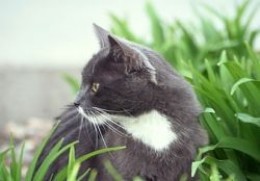
Removing Cats to Protect Birds Backfires on Island
An example of why killing cats isn't the answer
"It seemed like a good idea at the time: Remove all the feral cats from a famous Australian island to save the native seabirds.
"But the decision to eradicate the felines from Macquarie island allowed the rabbit population to explode and, in turn, destroy much of its fragile vegetation that birds depend on for cover, researchers said Tuesday.
"Removing the cats from Macquarie "caused environmental devastation" that will cost authorities 24 million Australian dollars ($16.2 million) to remedy, Dana Bergstrom of the Australian Antarctic Division and her colleagues wrote in the British Ecological Society's Journal of Applied Ecology."
Read the full article at Removing cats to protect birds backfires on island
Lensmaster's note:
Killing Cats for birds killed more birds and created a eco-nightmare. Killing cats is NOT the answer! These people found out the hard way -- don't muck with Mother nature's eco-system. Instead, practice TNR to control cat population in a systematic way.
Alley Cat Allies -- Saving Ferals Cats Everywhere
An Organization You Should Know About
Alley Cat Allies
Ally Cat Allies is an incredible organization to saves feral cats.
On their website, you will find:
- Caregiver/Advocate Information
- Animal Control/Shelter Information
- Legal Information
- Veterinarian Information
- Events & Conferences
They have the most extensive library of materials created to help you:
1. Recognize feral cats.
2. Trap, neuter and release information.
3. Organize TNR programs in your area.
4. Talk to people about TNR.
5. Get press for TNR (they even provide a press release template).
6. Raise feral kittens.
7. Build feeding stations for feral cats.
8. Learn how best to help feral cats.
9. Find success stories and statistics to share.
10. Find videos of feral cats and TNR in action.
11. And lots more.
For a complete list of their Factsheets and Articles, click Alley Cat Rescources
To contact them or get other information from their website, click Alley Cat Allies
Please take this poll to let me know what you think of TNR BEFORE reading this lens. Please take the poll at the end, (before the guest book). It will tell me how effective this lens is and what additional information to add. Thank you!
Are You For Or Against TNR?
ASPCA's Low-Cost Spay/Neuter Resource
Find One In Your Area
Low-Cost Spay/Neuter Programs
ASPCA has a special link for you to find low-cost spay/neuter programs in your community. Simply go toLow-Cost Spay Neuter Programs and enter in your zip code and you'll get a list of the programs in your area.What Do You Think?
Should TNR be the World's way to counteract overpopulation?
Want to link to this lens? Here's how
WANT TO LINK TO THIS PAGE?
Here's the HTML code to copy and paste:
Click Here to visit How to Save Feral Cats...with TNR
Copyright
This work is covered by copyright and can not be reprinted
in any matter (physical or digital) without prior written consent.
Copyright 2008-2017 Frankie Kangas All rights reserved.

